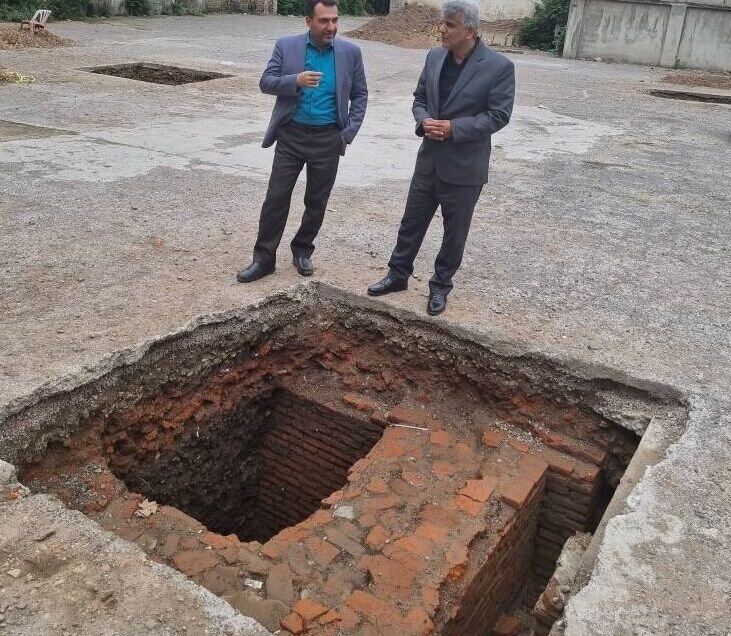Ruins of brick houses, estimated to date from Safavid era, unearthed in northern Iran

TEHRAN—Archaeologists have discovered ruins of several brick houses in Rasht, the capital of Gilan province in northern Iran. The ruins, based on their initial estimate, date back to the Safavid era (1501-1736).
The buildings rely on exceptional load-bearing walls with a width of 90 centimeters, IRNA quoted the provincial tourism chief as saying on Tuesday.
Those walls are considered one of the thickest examples constructed during the Safavid epoch in Rasht, Vali Jahani said.
Further investigation is on the agenda concerning the discovery, which is made near Imam Khomeini Blvd, the official noted.
The ruins appeared in about one meter below the surface when archaeologists dug some speculation trenches.
The Gilan region was within the sphere of influence of the successive Achaemenian, Seleucid, Parthian, and Sasanian empires that ruled Iran until the 7th century CE. The subsequent Arab conquest of Iran led to the rise of many local dynasties, and Gilan acquired an independent status that continued until 1567.
When it comes to tourism, the lush green province, which is bounded by the Caspian Sea, offers visitors a diverse range of experiences. With its mild climate, lush greenery, majestic mountains, and stunning coastline, Gilan is becoming an increasingly popular tourist destination in northern Iran. Gilan is also known for its beautiful natural scenery and exotic wildlife. The stunning waterfront of the Anzali lagoon, the majestic Talesh mountains, and the verdant rice paddies are just a few of the natural wonders that attract visitors to the region.
It offers plenty of activities for tourists. Hiking and trekking in the mountains, birdwatching in the lagoons, camping near the waterfalls and rivers, and sightseeing in the beautiful natural scenery are all popular activities for visitors. Rasht, the provincial capital, has long been a weekend escape for residents of Tehran who are looking to sample the famous local cuisine and hoping for some pluvial action–it's the largest and wettest town in the northern region.
AFM
Leave a Comment